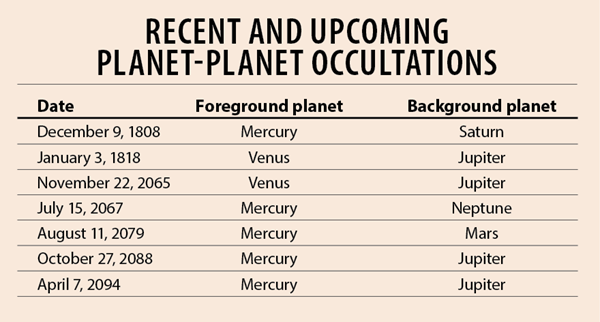Q: How often, if ever, are two planets aligned so precisely that one eclipses the other when viewed from Earth?
A: Astronomers call this event an occultation, rather than an eclipse. More often, planets, asteroids, or the Moon will occult a star, passing in front of it and allowing astronomers to glean valuable information about both objects, such as shape, size, and surface properties.
It’s rare — but not impossible — for two planets in the solar system to line up such that the nearer one occults the other. This is because although the planets orbit the Sun in roughly the same plane, their orbits are all slightly tilted with respect to one another, so two planets rarely appear to be in the same place at the same time.
Astronomer Steven Albers calculated how many “mutual occultations” visible from Earth have occurred or will occur between the years 1557 and 2230. In total, he determined there were 21 occultations in that time frame — an average of about one occultation every 33 years. However, some centuries have more than one occultation, while others have none; for example, Albers found no mutual occultations in the 20th century, but two occultations in the 19th century and five in the 21st century.
It’s also worth noting that many mutual occultations are difficult or impossible to view because they are visible only from the ocean or occur when the planets are close to the Sun in the sky, which washes out their light. In some historical cases, occultations may have been seen but not recorded as the passage of one planet in front of another because one of the planets involved, such as Uranus or Neptune, had not yet been discovered and was instead labeled as a star.










